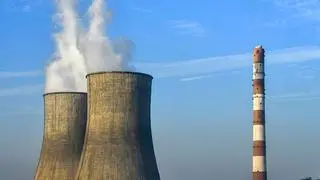Futures trading in India has seen a structural improvisation in the recent past. The commodity exchanges performance and the way they conduct trading indicate the development of the futures markets in general. Yet, they have not attracted significant participation.
While the futures market is expected to be instrumental in price discovery and risk management, there still debate on its utility among policy makers. The Forward Markets Commission (FMC) regulates the commodity markets; the exchanges act as demutualised self-regulatory organisations and they have adjunct clearinghouses for settlements and clearing the trade.
Of the 93 permitted commodities, futures contracts have been floated in about 30 commodities. However, only a few contracts are liquid and attract active participation.
Lack of awarenessCommodity market is not akin to financial market. Spot markets have to be studied in-depth before any futures contract is launched. The degree of participation and design of the contract needs to be reviewed on a regular interval by the FMC and market agencies.
A field survey of farmers, traders, oil processors and collateral management companies in parts of Rajasthan and Gujarat under the aegis of CMA, IIM Ahmedabad revealed that most farmers are not aware of the economic benefits of futures trading. Oil processors or millers are of the view that though futures trading is efficient in price discovery, it is not amenable to risk management. Delivery from futures trading may not be preferable if the commodity is readily available in the spot market, given the cost of arbitrage.
Injecting liquidityBasic research needs to be done to discern the role of futures in deriving and disseminating price. Investors need to study the inter-temporal price relationships between spot and futures succinctly. Furthermore, they need to explore heterogeneity in participation and spell out policy implications.
Participation is critical to injecting liquidity. It is possible that very few commodities markets have a concentration of smallholders; rather traders ( kachha & pucca artiyas ) and processors dominate. Stock-to-use ratio may thus give an accurate picture of liquidity in these markets. Furthermore, futures and spot price spread (the difference between ask/sell and bid/buy price) analysis is critical to assessing the speculative activity.
As there is a thin line dividing speculation from hedging, it depends on the agent’s capital allocation in the underlying asset and his/her risk appetite. Adverse selection and order processing besides inventory holding costs mainly impact the spread that, in turn, affects futures-spot market convergence. Over and above, exploring futures and spot price co-integration requires a robust yet parsimonious time series models.
Resolving inherent conflictsExchanges need to adopt good governance to strengthen their operations by formalising performance goals in alignment with mission and vision. A diversified board through a proper succession planning may be a decisive constituent of good governance that may resolve inherent conflicts between the exchange and its promoters and members.
Recent proposals and reports on call auction for determining final settlement price and setting up of an independent clearing corporation coupled with Liquidity Enhancement Scheme by the Working Groups could be the FMC’s decision to regulate and improve the functioning of the market.
From the stakeholder standpoint of view, corporate governance safeguards interests of the investor from being affected by developments such as the NSEL scam. To avert such bitter experiences, commodity markets should be allocated consumer protection fund.
On the social welfare front, active intervention of the FMC and the Ministry of Finance is expected. Adoption of good governance practices is critical to sustain organisational growth on a learning continuum. It has several implications at operational or/and tactical level of the exchange. For instance, before allowing computer programmed trading, the regulator should weigh pros and cons of products and technologies. Though high frequency or Algo trading seeks to enhance liquidity and hedging effectiveness by reducing trade impact costs, it might affect the market stability. While metals (precious and base) and energy products respond to innovations or shocks emanating from the global markets, insulating agricultural commodities from external shocks or excessive price spikes should be the regulator’s priority.
Kushankur Dey is a post-doctoral fellow of CMA, IIM-Ahmedabad and Enamul Haque is associated with National Institute of Agricultural Marketing. Views are personal.








Comments
Comments have to be in English, and in full sentences. They cannot be abusive or personal. Please abide by our community guidelines for posting your comments.
We have migrated to a new commenting platform. If you are already a registered user of TheHindu Businessline and logged in, you may continue to engage with our articles. If you do not have an account please register and login to post comments. Users can access their older comments by logging into their accounts on Vuukle.